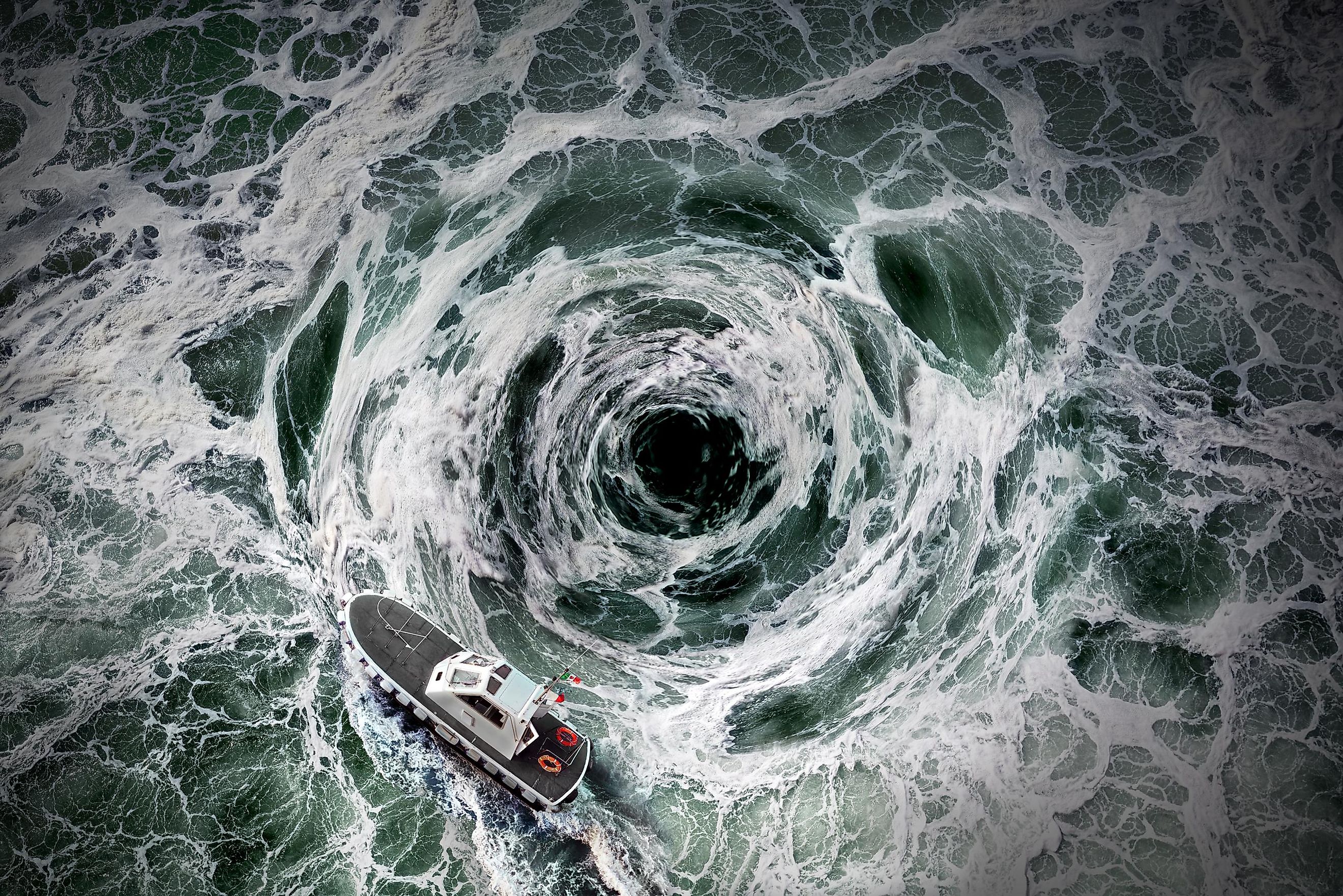
Ocean Currents
Ocean Currents are defined as the continuous movement of water from one part of the ocean to another. Many forces, such as the prevailing winds, variation in temperature, salinity differences, Coriolis effect, breaking waves, and cabbeling, generate this directed movement of ocean water. Moreover, a current’s direction and strength are influenced by the configuration of the shoreline, depth contours, and interaction with other currents. The ocean currents can flow for vast distances and create a Global Ocean Conveyor Belt, which distributes the massive amount of heat and moisture around the planet. This way, the ocean currents play a critical role in determining the climate of different regions.
Types Of Ocean Currents
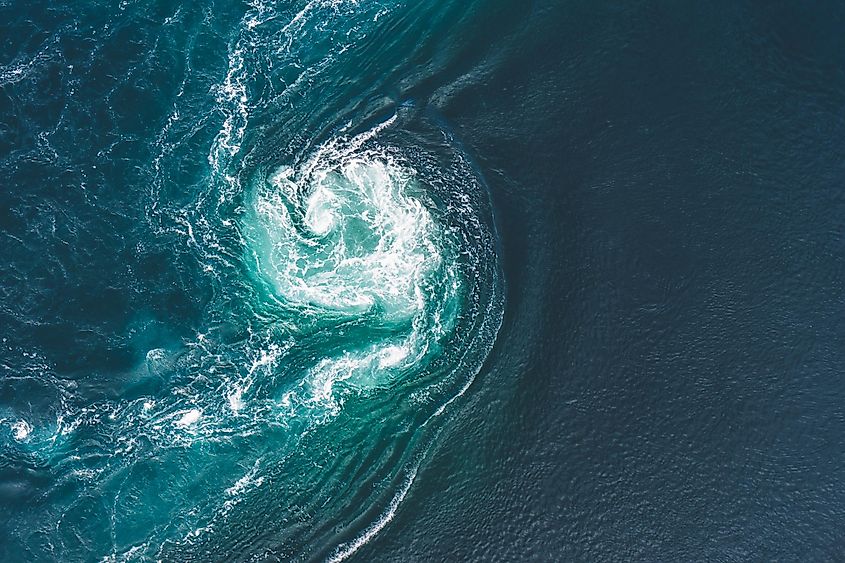
Ocean dynamics deals with the movement of water within the oceans. Oceanographers measure ocean currents in sverdrup, where one sverdrup equals the volume flow rate of 35,000,000 cubic feet per second. There are two fundamental types of ocean currents: surface currents and deep-water currents, which help to determine the character and flow of ocean water across the Earth.
Only 8% of all water in the ocean forms part of the surface currents, which are usually restricted to the upper 1,300 ft of ocean water. This surface current is separated from the underlying deep-water current by the variations in temperature and salinity. The Coriolis Effect plays a significant role in developing surface oceanic currents. The wind forces and the Coriolis Effect acting on the ocean water surface help deflect the moving water into a circular pattern creating oceanic gyres.
The different temperature and salinity gradients, as well as the differences in the density of ocean water generated by surface heat and freshwater fluxes, contribute to the Thermohaline Circulation or Global Ocean Conveyor Belt. These currents flow entirely below the ocean surface and are therefore hidden from instant detection. The two significant vertical ocean currents that are observed in the deep waters are referred to as upwelling and downwelling.
Causes Of Ocean Currents
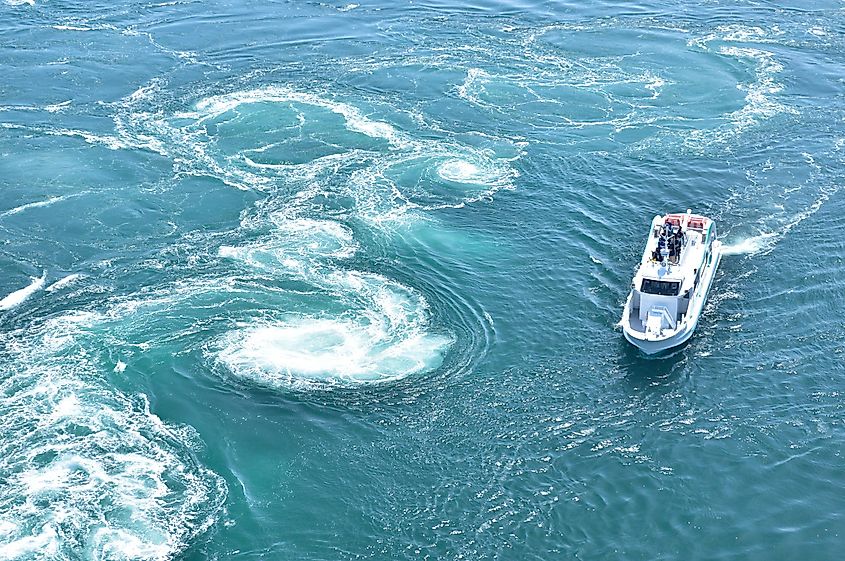
The significant factors that determine the circulation pattern of ocean currents include the prevailing winds, variation in seawater temperature, rotation of the Earth and Coriolis force; figuration of the coastlines, and differences in the density of seawater. The topography of ocean basins and neighboring landmasses also influences ocean currents. The heating of surface seawater by solar energy causes it to expand, whereas the winds blowing over the surface make the water move. The greater heat at the Equator and comparatively lesser heat at the poles set up ocean convection currents. Therefore, the warmer water in the equatorial regions becomes lighter and flows toward the poles. In contrast, the polar regions' colder and denser water sinks and flows toward the equatorial regions. The ocean currents influenced by the prevailing winds move clockwise in the Northern Hemisphere and counterclockwise in the Southern Hemisphere, as per the Coriolis Effect. The resulting gyres produce large circular currents in the ocean basins.
Distribution Of Ocean Currents
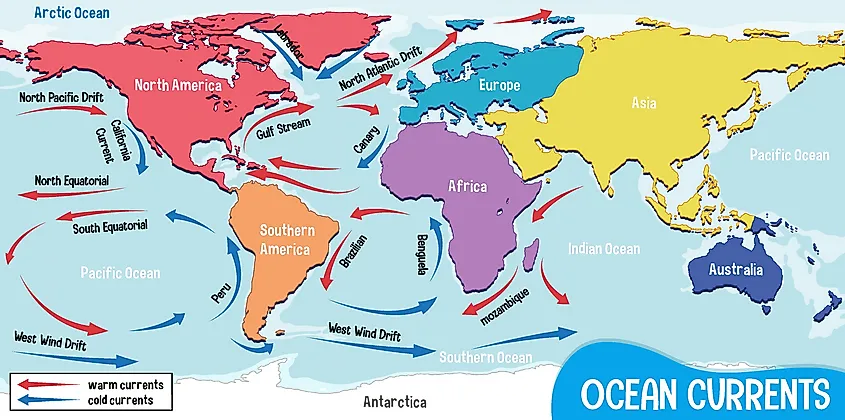
The ocean currents in the five big oceans of the world play an essential role in distributing the massive amount of heat, moisture, nutrients, and gases around the planet, in turn determining the climate of different regions on Earth. The warm ocean currents originate close to the Equator and move toward the higher latitudes, whereas the cold ocean currents originate close to the poles and move toward the lower latitudes. In other words, through ocean currents, the cold waters of the Arctic and Antarctic circles move toward the warmer waters of the tropical and equatorial regions, while the warm waters of the lower latitudes move toward the poles.
Currents of the Arctic Ocean: Baffin Island Current, East Greenland Current, Labrador Current, Norwegian Current, West Greenland Current, Beaufort Gyre, East Iceland Current, North Icelandic Jet, Transpolar Drift System, and West Spitsbergen Current.
Currents of the Atlantic Ocean: Angola Current, Atlantic Meridional Overturning Circulation, Benguela Current, Antilles Current, Azores Current, Brazil Current, Cape Horn Current, East Greenland Current, Canary Current, Caribbean Current, East Iceland Current, Falkland Current, Equatorial Counter Current, Florida Current, Guinea Current, Gulf Stream, Labrador Current, Irminger Current, Lomonosov Current, Loop Current, North Equatorial Current, North Atlantic Current, North Brazil Current, Norwegian Current, South Atlantic Current, Portugal Current, West Greenland Current, South Equatorial Current, and West Spitsbergen Current.
Currents of the Indian Ocean: Agulhas current, East Madagascar current, Indian Monsoon current, Agulhas return current, Equatorial counter current, Leeuwin Current, Indonesian Throughflow, Mozambique current, Madagascar current, North Madagascar current, Somali current, South Equatorial current, Southwest Madagascar Coastal current, and West Australian current.
Currents of the Pacific Ocean: Alaska current, California current, Cromwell current, Aleutian current, Cape Horn current, Davidson current, East Korea Warm current, Humboldt current, east Australian current, Equatorial counter current, Indonesian Throughflow, Kuroshio current, Mindanao Eddy, Kamchatka current, Mindanao current, North Equatorial current, North Korea cold current, North Pacific current, South Equatorial current, Oyashio current, Subtropical counter current, Tasman front, and Tasman outflow.
Currents of the Southern Ocean: Antarctic Circumpolar Current, Tasman outflow, and Kerguelen deep western boundary current.
Effects Of Ocean Currents
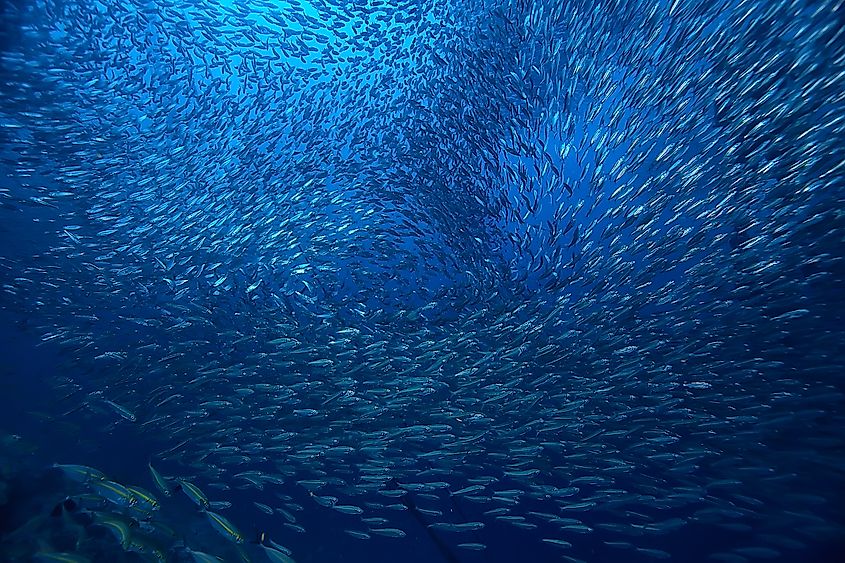
The various effects of ocean currents have been discussed below. These are:
Climatic conditions: Ocean currents influence the climatic conditions of the regions in which they flow. For example, the warm Equatorial currents raise the temperature of the region where they flow, while the cold currents decrease the temperature of the areas where they flow.
Rainfall: The winds blowing over warm currents pick up moisture and bring rainfall. On the other hand, the cold currents do not bring any rain; instead, it makes the regions cooler and drier.
Fog Formation: The meeting of the warm and cool ocean currents leads to the formation of dense fog. In the past, this fog formation has resulted in many ship wreckages, as the ships could not see the icebergs correctly due to poor visibility.
Create Fishing Zone: The cold currents which flow from the polar and sub-polar regions bring a lot of plankton. Since plankton is essential for the continued survival of several vital organisms in the marine ecosystem, abundant fish populations are found in the areas where these ocean currents flow. In addition, ocean currents also help in the dispersal of marine organisms, which is crucial in establishing and maintaining the biodiversity of aquatic ecosystems.
Trade and Commerce: Ocean currents help the ships to sail while following the direction of the currents. Moreover, an ocean current that brings warm waters up the North Atlantic to the northwestern part of Europe blocks ice formation along the seashores and helps keep the European ports ice-free during the winters.
Ocean Currents And Climate Change
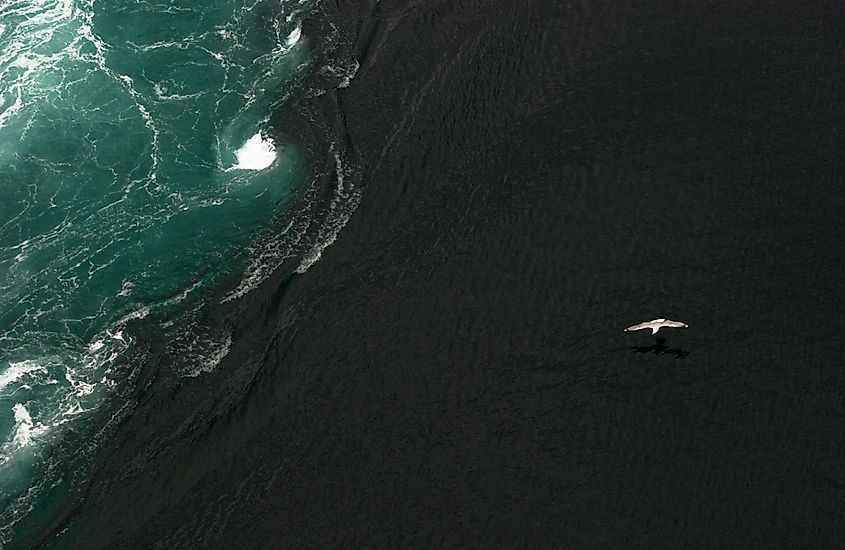
Several studies have reported that anthropogenic climate change has led to increased surface seawater temperatures, evaporation of seawater, and rapid melting of glacial and sea ice. This influx of warm freshwater to the ocean surface has resulted in blocking sea ice formation and disrupting the sinking of denser, colder waters. Moreover, a rise in surface seawater temperature increases the amount of atmospheric water vapor over the oceans, further increasing the quantity of greenhouse gas. This series of events is gradually weakening and slowing down the ocean currents and the global ocean conveyor belt which could result in significant changes in temperatures of different regions on Earth.
As evident from the above discussion, a thorough understanding of how these different surface ocean currents work, what impacts them, and how a knowledge of this oceanic current system can help reduce shipping costs, establish marine power generation projects, and aquaculture operations. Moreover, in this era of climate change caused by harmful anthropogenic activities, tracking any changes in this system is necessary to tackle the adverse effects better.











